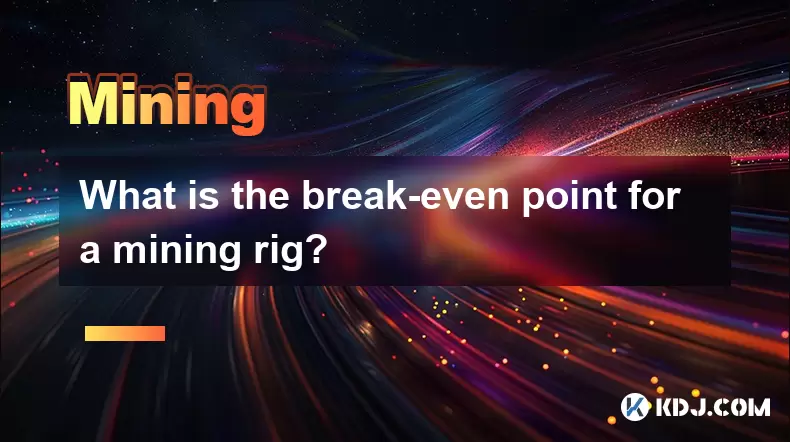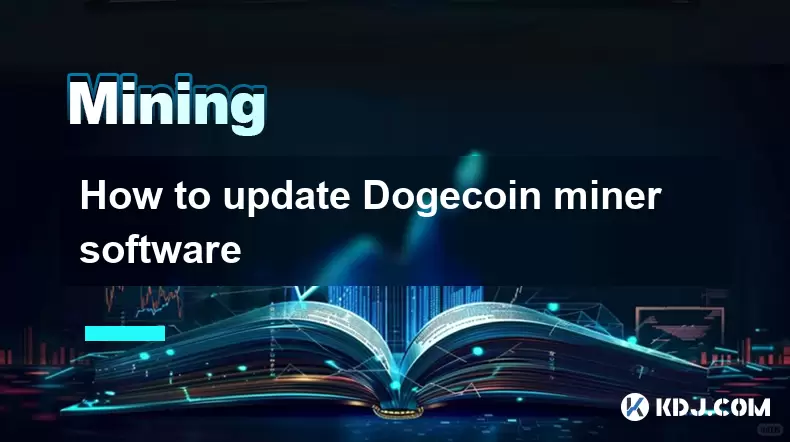-
 Bitcoin
Bitcoin $117,576.6195
-0.21% -
 Ethereum
Ethereum $2,938.5668
-1.35% -
 XRP
XRP $2.7699
4.60% -
 Tether USDt
Tether USDt $1.0003
0.01% -
 BNB
BNB $688.1624
-0.01% -
 Solana
Solana $160.5113
-1.95% -
 USDC
USDC $0.9999
0.01% -
 Dogecoin
Dogecoin $0.1976
-0.70% -
 TRON
TRON $0.3008
1.54% -
 Cardano
Cardano $0.7159
-2.16% -
 Hyperliquid
Hyperliquid $46.2240
2.04% -
 Stellar
Stellar $0.3966
22.03% -
 Sui
Sui $3.3928
-3.11% -
 Chainlink
Chainlink $15.1204
-2.43% -
 Bitcoin Cash
Bitcoin Cash $515.1741
-1.19% -
 Avalanche
Avalanche $20.8130
-0.90% -
 Hedera
Hedera $0.2001
-2.12% -
 UNUS SED LEO
UNUS SED LEO $9.0522
0.72% -
 Shiba Inu
Shiba Inu $0.0...01316
-2.01% -
 Toncoin
Toncoin $2.9843
0.61% -
 Litecoin
Litecoin $92.6745
-2.71% -
 Polkadot
Polkadot $3.9483
-0.06% -
 Monero
Monero $328.5347
1.10% -
 Dai
Dai $0.9998
0.01% -
 Ethena USDe
Ethena USDe $1.0006
-0.01% -
 Uniswap
Uniswap $8.3739
-6.50% -
 Bitget Token
Bitget Token $4.4241
-1.99% -
 Pepe
Pepe $0.0...01222
-3.96% -
 Aave
Aave $300.5203
-3.61% -
 Bittensor
Bittensor $382.2607
-1.92%
What is the break-even point for a mining rig?
The break-even point in crypto mining is when total revenue equals total costs, determining when an investment becomes profitable based on factors like hardware, electricity, and network difficulty.
Jul 12, 2025 at 10:42 pm

Understanding the Concept of a Break-Even Point in Cryptocurrency Mining
The break-even point for a mining rig refers to the moment when the total revenue generated from mining equals the total costs incurred, resulting in no profit or loss. In the context of cryptocurrency mining, this is a critical metric that determines whether a mining operation is financially viable. It involves calculating all initial and ongoing expenses such as hardware cost, electricity fees, cooling, maintenance, and pool fees, and comparing them with the income derived from block rewards and transaction fees.
Cryptocurrency miners often track this point to assess how long it will take before their investment starts yielding returns. The break-even period can vary significantly depending on several variables including the type of cryptocurrency being mined, network difficulty, hash rate performance, and local electricity rates.
Factors Influencing the Break-Even Calculation
Several key factors influence the break-even calculation for a mining rig:
- Initial Investment Cost: This includes the price of the mining rig itself, additional components like GPUs, ASICs, motherboards, and power supplies.
- Electricity Costs: Energy consumption is one of the largest recurring expenses. Miners must calculate kilowatt-hour (kWh) usage multiplied by the local electricity rate.
- Mining Difficulty: As more miners join the network, the difficulty level adjusts upward, which can reduce individual earnings unless hash power increases accordingly.
- Cryptocurrency Price Volatility: Since mining rewards are paid in crypto, price fluctuations can impact the dollar value of earnings, affecting the time required to reach break-even.
- Mining Pool Fees: Joining a mining pool typically incurs a small fee, which reduces overall profitability.
Each of these elements plays a role in determining how quickly a miner can recoup their investment.
How to Calculate the Break-Even Point for Your Mining Rig
To determine the break-even point, you need to perform a detailed financial analysis using specific data points. Here’s a step-by-step guide:
- Determine Total Initial Investment: Include the cost of the mining rig, peripherals, and setup expenses.
- Calculate Daily Mining Revenue: Use online calculators or mining software to estimate daily earnings based on current network difficulty, hashrate, and block reward.
- Estimate Daily Operational Expenses: Focus primarily on electricity costs by multiplying the rig’s power draw (in watts) by hours of operation and the local kWh rate.
- Subtract Expenses from Revenue: If your daily revenue exceeds your daily cost, you’re making a profit; otherwise, you’re running at a loss.
- Divide Net Investment by Net Daily Profit: This gives you the number of days required to break even.
For example, if your total investment is $3,000 and your net daily profit after expenses is $15, your break-even point would be approximately 200 days.
Choosing the Right Tools for Accurate Calculations
Using reliable tools and platforms can greatly assist in computing the break-even point accurately. Popular mining calculators include:
- WhatToMine: Offers real-time calculations for various cryptocurrencies and hardware setups.
- CryptoCompare Mining Calculator: Provides insights into profitability based on hashrate, power consumption, and regional electricity prices.
- NiceHash Profitability Tool: Useful for assessing potential returns when renting or selling hashing power.
These platforms allow users to input custom parameters such as GPU model, power draw, and local energy rates to generate precise projections.
Real-Time Monitoring and Adjustments
Once your mining rig is operational, continuous monitoring is essential to ensure accuracy in tracking progress toward the break-even point. Real-time dashboards provided by mining pools or third-party applications help track:
- Hashrate Performance: Ensures your rig is performing optimally and not underclocking due to overheating or software issues.
- Earnings Fluctuations: Due to changes in cryptocurrency prices and mining difficulty.
- Electricity Usage: Helps identify inefficiencies or unexpected spikes in power consumption.
Adjustments may include switching coins, overclocking hardware, or relocating the mining rig to a region with cheaper electricity.
Frequently Asked Questions
Q: Can cloud mining affect the break-even point?
A: Yes, cloud mining eliminates upfront hardware costs but introduces contract fees and potential hidden charges, which can extend the break-even timeline compared to owning a physical rig.
Q: Does overclocking a mining rig help reach the break-even point faster?
A: Overclocking can increase hashrate and potentially earnings, but it also raises power consumption and heat output, which may increase electricity costs and reduce hardware lifespan.
Q: How does joining a mining pool impact the break-even calculation?
A: While mining pools offer more consistent payouts, they deduct a small percentage as a fee, slightly reducing earnings and extending the time needed to reach break-even.
Q: Is it possible to calculate the break-even point manually without online tools?
A: Yes, by collecting data on hashrate, difficulty, power usage, and electricity rates, you can manually compute daily earnings and subtract costs to estimate the break-even period.
Disclaimer:info@kdj.com
The information provided is not trading advice. kdj.com does not assume any responsibility for any investments made based on the information provided in this article. Cryptocurrencies are highly volatile and it is highly recommended that you invest with caution after thorough research!
If you believe that the content used on this website infringes your copyright, please contact us immediately (info@kdj.com) and we will delete it promptly.
- Bitcoin Price's Golden Number: Analyst Predicts Massive Breakout!
- 2025-07-13 02:30:12
- XRP Price Breakout: Analysts Eyeing Explosive Moves
- 2025-07-13 02:50:12
- Grayscale, AI Crypto, and Top Assets: What's the Deal?
- 2025-07-13 02:55:11
- DOGE's $0.25 Ceiling: Will the Meme Coin Break Through?
- 2025-07-13 02:30:12
- Binance, Bloomberg, and a Lawsuit Threat: CZ's Fighting Back!
- 2025-07-13 01:30:12
- Litecoin, BONK, BlockDAG Presale: Navigating the Crypto Frenzy
- 2025-07-13 00:30:12
Related knowledge

How to keep a mining rig cool
Jul 12,2025 at 01:42pm
Understanding the Importance of Cooling in Mining RigsCryptocurrency mining is an intensive process that places heavy demand on hardware components, p...

How much does it cost to start crypto mining?
Jul 13,2025 at 12:22am
Understanding the Basic Costs of Crypto MiningStarting crypto mining involves several upfront and ongoing expenses. The primary costs include hardware...

What do I need to start mining crypto?
Jul 13,2025 at 12:28am
Understanding the Basics of Crypto MiningCrypto mining is the process by which transactions are verified and added to a blockchain, and new coins are ...

How to find the best Dogecoin mining pool for me
Jul 12,2025 at 04:14pm
Understanding the Role of a Mining PoolWhen mining Dogecoin, joining a mining pool can significantly increase your chances of earning consistent rewar...

How to update Dogecoin miner software
Jul 12,2025 at 12:36pm
Understanding Dogecoin Mining and the Need for Software UpdatesDogecoin mining involves using specialized software to validate transactions on the Dog...

Overclocking settings for Dogecoin mining
Jul 12,2025 at 12:57pm
Understanding Overclocking in Dogecoin MiningOverclocking refers to the process of increasing the clock rate of a component—typically a GPU or CPU—bey...

How to keep a mining rig cool
Jul 12,2025 at 01:42pm
Understanding the Importance of Cooling in Mining RigsCryptocurrency mining is an intensive process that places heavy demand on hardware components, p...

How much does it cost to start crypto mining?
Jul 13,2025 at 12:22am
Understanding the Basic Costs of Crypto MiningStarting crypto mining involves several upfront and ongoing expenses. The primary costs include hardware...

What do I need to start mining crypto?
Jul 13,2025 at 12:28am
Understanding the Basics of Crypto MiningCrypto mining is the process by which transactions are verified and added to a blockchain, and new coins are ...

How to find the best Dogecoin mining pool for me
Jul 12,2025 at 04:14pm
Understanding the Role of a Mining PoolWhen mining Dogecoin, joining a mining pool can significantly increase your chances of earning consistent rewar...

How to update Dogecoin miner software
Jul 12,2025 at 12:36pm
Understanding Dogecoin Mining and the Need for Software UpdatesDogecoin mining involves using specialized software to validate transactions on the Dog...

Overclocking settings for Dogecoin mining
Jul 12,2025 at 12:57pm
Understanding Overclocking in Dogecoin MiningOverclocking refers to the process of increasing the clock rate of a component—typically a GPU or CPU—bey...
See all articles

























































































